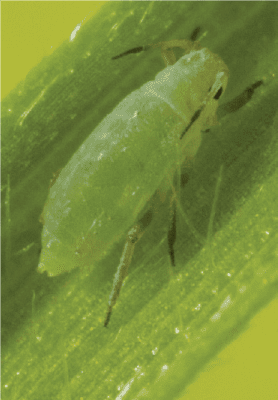AUSTRALIAN scientists have confirmed that the Russian Wheat Aphid (RWA), now established throughout parts of the nation’s south-eastern cropping regions, is a single biotype which possibly entered Australia from the United States.
First detected in South Australia in 2016, the pest is now present in areas of SA, Victoria, Tasmania and southern New South Wales.
RWA has been the focus of several unprecedented Grains Research and Development Corporation (GRDC) research investment undertakings which are providing the Australian grains industry with greater understanding of the pest and its potential impact, to inform management strategies.
Experiments to identify the biotype/biotypes of the aphid present in Australia and possible origin of the incursion have been led by entomologists Maarten van Helden and Greg Baker from the SA Research and Development Institute (SARDI), a division of Primary Industries and Regions SA (PIRSA).
Their work has concluded that the aphids present in Australia belong to a single biotype (having the same genetic make-up), named RWAau1.
Dr van Helden said the virulence profile of RWAau1 was nearly identical to the American RWA1 biotype which suggested that the origin of the incursion in Australia is either from the US or from the same origin as the original RWA1 that was first detected in Colorado in the US in 1986.
“Not only does this information help to identify the most likely geographical origin of the aphid, and the possible incursion pathway, but it also enables identification of the plant resistance genes – among the many existing overseas – that could be used by breeders to develop new resistant cereal varieties,” Dr van Helden said.
“While it is still important to know where, when and how this aphid has arrived in Australia (to avoid other incursions), it is even more important to know what ‘biotype’ or biotype(s) of the aphid have appeared in Australia, to be able to potentially develop sustainable integrated management strategies which include plant resistance as one tool.”
Source: GRDC


HAVE YOUR SAY